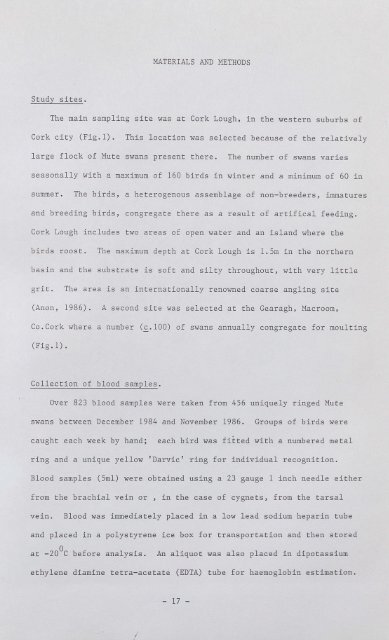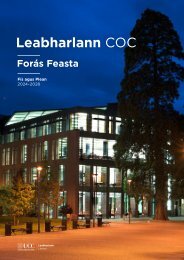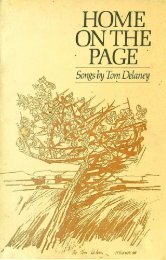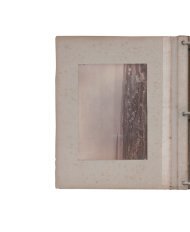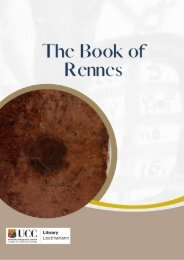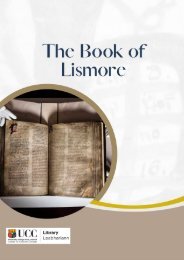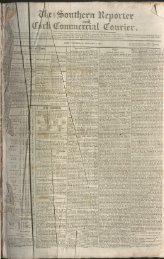Lead Toxicity in Mute Swans
LEAD TOXICITY IN MUTE SWANS Cygnus olor (Gmelin). By JOHN O'HALLORAN A thesis submitted to the National University of Ireland in candidature for the degree of Doctor of Philosophy September 1987
LEAD TOXICITY IN MUTE SWANS
Cygnus olor (Gmelin).
By
JOHN O'HALLORAN
A thesis submitted to the National University of Ireland
in candidature for the degree of Doctor of Philosophy
September 1987
Create successful ePaper yourself
Turn your PDF publications into a flip-book with our unique Google optimized e-Paper software.
MATERIALS AND METHODS<br />
Study sites.<br />
The ma<strong>in</strong> sampl<strong>in</strong>g site was at Cork Lough, <strong>in</strong> the western suburbs of<br />
Cork city (Fig.l). This location was selected because of the relatively<br />
large flock of <strong>Mute</strong> swans present there.<br />
The number of swans varies<br />
seasonally with a maximum of 160 birds <strong>in</strong> w<strong>in</strong>ter and a m<strong>in</strong>imum of 60 <strong>in</strong><br />
summer.<br />
The birds, a heterogenous assemblage of non-breeders, immatures<br />
and breed<strong>in</strong>g birds, congregate there as a result of artifical feed<strong>in</strong>g.<br />
Cork Lough <strong>in</strong>cludes two areas of open water and an island where the<br />
birds roost.<br />
The maximum depth at Cork Lough is l.5m <strong>in</strong> the northern<br />
bas<strong>in</strong> and the substrate is soft and silty throughout, with very little<br />
grit. The area is an <strong>in</strong>ternationally renowned coarse angl<strong>in</strong>g site<br />
(Anon, 1986).<br />
A second site was selected at the Gearagh, Macroom,<br />
Co.Cork where a number (~.100)<br />
of swans annually congregate for moult<strong>in</strong>g<br />
(Fig.l).<br />
Collection of blood samples.<br />
Over 823 blood samples were taken from 456 uniquely r<strong>in</strong>ged <strong>Mute</strong><br />
swans between December 1984 and November 1986.<br />
Groups of birds were<br />
caught each week by hand;<br />
each bird was fitted with a numbered metal<br />
r<strong>in</strong>g and a unique yellow 'Darvic' r<strong>in</strong>g for <strong>in</strong>dividual recognition.<br />
Blood samples (5ml) were obta<strong>in</strong>ed us<strong>in</strong>g a 23 gauge 1 <strong>in</strong>ch needle either<br />
from the brachial ve<strong>in</strong> or , <strong>in</strong> the case of cygnets, from the tarsal<br />
ve<strong>in</strong>.<br />
Blood was immediately placed <strong>in</strong> a low lead sodium hepar<strong>in</strong> tube<br />
and placed <strong>in</strong> a polystyrene ice box for transportation and then stored<br />
at -20°c before analysis.<br />
An aliquot was also placed <strong>in</strong> dipotassium<br />
ethylene diam<strong>in</strong>e tetra-acetate (EDTA) tube for haemoglob<strong>in</strong> estimation.<br />
- 17 -


